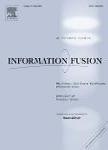版权所有:内蒙古大学图书馆 技术提供:维普资讯• 智图
内蒙古自治区呼和浩特市赛罕区大学西街235号 邮编: 010021

作者机构:Univ Kentucky Dept Comp Sci Lexington KY 40506 USA Univ Kentucky Inst Biomed Informat Lexington KY 40506 USA
出 版 物:《INFORMATION FUSION》 (Inf. Fusion)
年 卷 期:2025年第120卷
页 面:103079页
核心收录:
学科分类:08[工学] 0812[工学-计算机科学与技术(可授工学、理学学位)]
基 金:University of Kentucky Center National Institutes of Health, NIH, (P30AG072946, R21AG070909, NAIRR240219) National Institutes of Health, NIH National Science Foundation, NSF, (ITE 2433190, IIS 2327113) National Science Foundation, NSF
主 题:Time series classification Deep learning State-space-machine Multi-view learning
摘 要:Multivariate time series classification (TSC) is critical for various applications in fields such as healthcare and finance. While various approaches for TSC have been explored, important properties of time series, such as shift equivariance and inversion invariance, are largely underexplored by existing works. To fill this gap, we propose a novel multi-view approach to capture patterns with properties like shift equivariance. Our method integrates diverse features, including spectral, temporal, local, and global features, to obtain rich, complementary contexts for TSC. We use continuous wavelet transform to capture time-frequency features that remain consistent even when the input is shifted in time. These features are fused with temporal convolutional or multilayer perceptron features to provide complex local and global contextual information. We utilize the Mamba state space model for efficient and scalable sequence modeling and capturing long-range dependencies in time series. Moreover, we introduce a new scanning scheme for Mamba, called tango scanning, to effectively model sequence relationships and leverage inversion invariance, thereby enhancing our model s generalization and robustness. Experiments on two sets of benchmark datasets (10+20 datasets) demonstrate our approach s effectiveness, achieving average accuracy improvements of 4.01-6.45% and 7.93% respectively, over leading TSC models such as TimesNet and TSLANet.